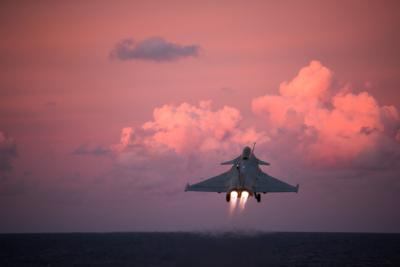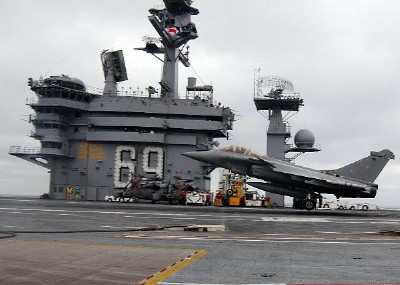French Fighter Fleet Grows, Settling Debate Over Future MiG Procurement
The long-running battle for India’s naval fighter dollars continued with a signed $7.5-billion deal for new Rafale Marines to outfit their carrier force, which nets them a full collection of simulators, weapons, logistics, and 26 aircraft.

India’s navy remains a somewhat motley fighter operator, thanks to its own boutique blend of East-West aircraft. For many years, the Indian Navy was reknowned for being one of few to operate the MiG-29K, flying from their carriers INS Vikramaditya and Vikrant. Apparently, the service has been less than impressed with the uptime of MiG-29Ks, a problem exacerbated by poor serviceability and parts sourcing over time.. In recent months, the industry watched hungrily as India weighed its options, debating whether or not it would be worth it to continue down the road of Russian parts and support in the post-sanctions world, or throw in with the West and all their nifty accouterments. On one hand, India already operated a handful of Rafale fighters on land, and the program remains a fairly affordable option when stacked up against full-featured American fighters. On the other, Russia would probably be quite happy to strike a deal for more MiGs, and it's always easiest to bolster a fleet already on the
books than start fresh. Then, there was Boeing, backed by U.S. diplomacy and all the niceties that can sometimes accompany a bargain there. But in the end, India went with the French, reducing their initial request for 57 aircraft down to 26.
The first Indian-spec Rafale M should be ready for display in the next year or two, but some special modifications may add to the delay. Granted, the big headlining feature of Rafale Ms in Indian service should be fairly simple, but modifications to established designs always take some time. The Vikrant’s fairly small elevators mean the Rafale Ms need folding wingtips in order to fit the tight confines of their headlining carrier. Of the 26 airframes on order, India will get only 4 tandem-seat trainer planes for shore operations, aiding their simulators in bringing carrier pilots up to snuff before their solo flights.

The Rafale M wasn’t exactly a surprise to anybody paying attention in recent years, as one of the prime contenders evaluated for the order. The Russians weren’t too seriously considered, but Boeing’s F/A-18E Super Hornet was a solid entrant into the competition, too. Paired with the usual assistance that comes with American FMS buys, it’s a tad surprising it didn’t get further in the competition, but the Rafale has always had pretty good marketing and a very eager sales team. India’s continued preference for ski-jump carrier ops played into the sale, according to some who keep their finger on the pulse. Boeing had set up the Super Hornet’s ski-jump takeoff capabilities in 2020, followed by similar demonstrations by Rafale Ms in 2022. In the end, it was probably an uphill battle all along for Boeing–The Rafale is a known, familiar aircraft to India, and the French easy partners to work with in their operations so far.
 ANN's Daily Aero-Linx (04.30.25)
ANN's Daily Aero-Linx (04.30.25) ANN FAQ: Turn On Post Notifications
ANN FAQ: Turn On Post Notifications Classic Aero-TV: Agile Aeros Jeff Greason--Disruptive Aerospace Innovations
Classic Aero-TV: Agile Aeros Jeff Greason--Disruptive Aerospace Innovations Aero-News: Quote of the Day (04.30.25)
Aero-News: Quote of the Day (04.30.25) ANN's Daily Aero-Term (04.30.25): Expedite
ANN's Daily Aero-Term (04.30.25): Expedite




